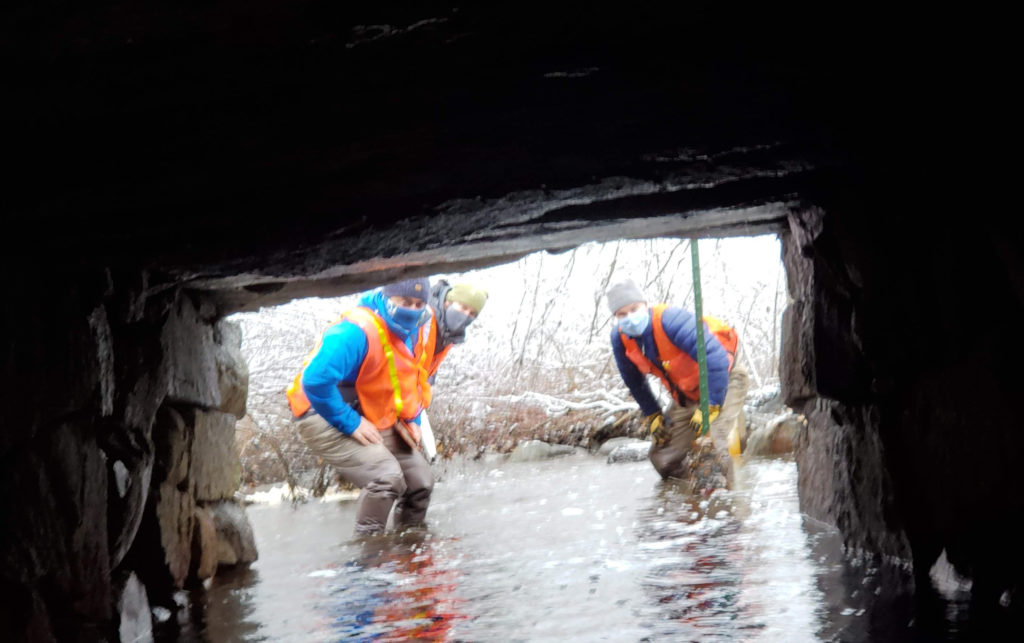
Sediment movement and monitoring after a dam removal
One of the impacts of a dam in a stream is that it holds back sediment. The sediment accumulates behind the dam instead of moving slowly downstream. This starves the area downstream of smaller particles and can result in a rockier habitat than is appropriate for the stream. Natural sediment movement is very slow, as the water erodes banks at high flows and shifts the streambed over time. The potential amount of sediment movement immediately after a dam removal is much greater, so precautions have to be taken to ensure that there is not a massive pulse that would negatively impact the downstream habitat that we are looking to restore along with the habitat upstream of the dam. That said, downstream release has been shown to be beneficial and is significantly less expensive than dredging, which also removes useful material from the river system.

Before downstream release can be permitted, the sediment is tested during the feasibility phase at the start of the project. As long as it is as clean or cleaner than the sediment downstream, it is allowed to be released. That establishes that there would be no chemical impacts to the downstream habitat. After the dam is removed, it is important to document that the sediment is moving downstream properly. This is especially important for a dam removal like Peterson Pond, where the Mill Street culvert is not far downstream. If too much sediment accumulates in the culvert, it could reduce the capacity of the culvert and cause problems during high flows.
At Peterson Pond, monitoring was partially conducted by the contractors, who measured sediment depth over the past couple of months at 4 different locations downstream. More intensive monitoring has been conducted by MassDER, which has established 6 cross-sections along the Third Herring Brook from just downstream of the former dam to just upstream of the Mill Pond dam wetland. At each cross-section, the top of the sediment and the depth to refusal (where the soft sediment ends and the hard bottom begins) is measured every two feet, creating a profile across the stream. Thus far, we have seen sediment move slowly downstream, and the bottom immediately downstream has shifted in the past few months from silt to sand. The culvert initially had a few feet of sediment in some places but that has started to flush through. MassDER will be continuing to monitor sediment movement monthly over the next year.

